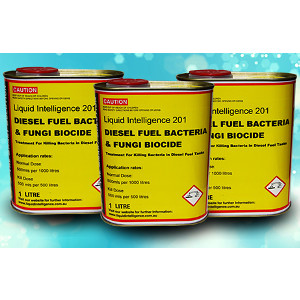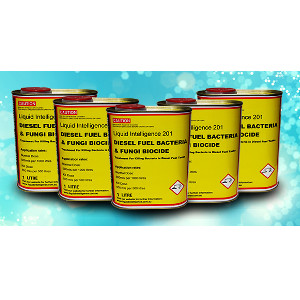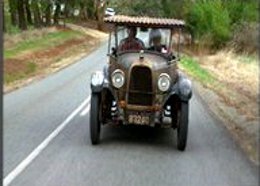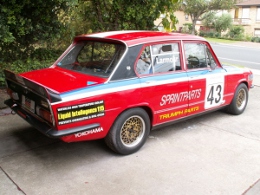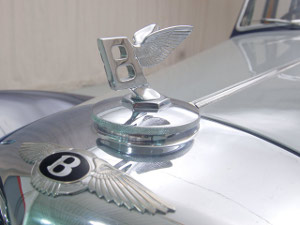Diesel Fuel Bacteria & Fungi Biocide Treatments


Peter Maher – The Man Behind Liquid Intelligence
Instant Phone Advice You can call Peter now on 1800 441 163 or 02 8188 2060 (7am to 7pm seven days a week – including public holidays – except Christmas Day) for a chat about product and application information or to simply purchase Liquid Intelligence.
For Instant Phone Advice
|
Dirty Diesel?
“I Guarantee You Too Can Stop Bacteria, Fungus and Yeast Contamination In Your Diesel Fuel Tank Now, Once and For All… With Liquid Intelligence Diesel Fuel Biocide”It Really Does Do Exactly What It Says
|

If you have biologically contaminated diesel fuel (or think you might have) then you are in the right place.
Liquid Intelligence 201 Dual-Phase Biocide is one of the most advanced biocides on the market today. It works not only in water but in diesel fuel… and is formulated for a quick-kill of bacteria.
 |
Successfully Stops Bacteria, Fungus and Yeast Contamination In Your Diesel Fuel Tank. Recommended For:
| Recreational
|
Light Commercial |
Heavy Commercial |
Road Haulage
|
Earth Moving |
Cranes |
Late Model |
Work |
Forklifts |
Farm Machinery
|
Boats |
Ships |
Contamination is:
- Costly
- Unproductive
- A Nuisance.
If You Get A Dose Of Contaminated Diesel Fuel
It can be very costly to repair and eliminate. Plus it can cause you serious unproductive down time… and if not dealt with correctly will keep recurring .
Look At This Dark Stringy Mucous Looking Biofilm Gunk
It’s the filter blocking fuel starving by-product of microbial activity in diesel fuel.
Diesel Bug Needs To Be Eradicated Urgently… Here’s WhyBecause Its Can Spread So Fast Shown Live In Real Time – Recorded On An Electronic Microscope Camera at 100x Magnification
The bacterial culture showcased in this intriguing video has originated from a diesel fuel sample extracted from the bottom of a half full storage tank with suspected symptoms of diesel bug contamination. In a controlled laboratory setting, we subjected the fuel sample to incubation over a period of 48 hours using a petri dish containing a nutrient-rich agar medium. Upon close examination at 100 times magnification, the footage captured in real-time video, vividly reveals the robust nature of this particular virulent microbial diesel bug group, highlighting their impressive ability to multiply rapidly. Amazingly, these types of microbial cells, weighing just one millionth of a gram, have potential to grow into a substantial biomass within a mere 24 hours. As you can see in this video, this exponential growth happens swiftly. Therefore, it would only require a short period for a significant biofilm to develop in the diesel fuel storage tank when given the right conditions as they currently exist in this petri dish sample. There are about 60 fungus and yeast genetic variations and almost as many bacterial mutations that have been identified in contaminated diesel. Interestingly, all these microorganisms are airborne. They exist in the water molecules suspended in the air. It is from the water that these organisms extract enough oxygen to thrive. And because fuel tanks must be vented, this creates a pathway for air and microbes to flow in and out of a diesel tank. Even slight changes in temperature can cause air to be drawn into and expelled out of a tank. Diesel tanks provide an ideal environment for microbes due to the heavier density of water compared to diesel. Condensation water collects and settles at the tank’s bottom, forming what is known as ‘water bottom’. Serving as an interface between water and fuel, the water bottom allows microbes to thrive by extracting necessary oxygen from the water below and obtaining energy in the form of carbon and nutrients from the diesel above. When the fuel in a diesel tank warms up due to engines fuel return flow or from high ambient air temperature, microbe growth can be remarkably swift. Given time, the bacterial infection in the diesel fuel tank showcased in this video, will produce significant volumes of biofilm with thicknesses measured in many centimetres. And following instances of tank turbulence or movement, fragments of the biofilm, like this sample can detach, posing a risk of obstructing fuel filters and causing fuel supply blockages to the engine. Additionally, some microbes can release acidic substances, which can lead to corrosion in metal fuel tanks and engine fuel delivery components. This type of bacterial contamination often starts small and unseen in the bottom of diesel fuel tanks. And doesn’t necessarily cause a problem if the fuel is used and replaced regularly. However, vessels, vehicles, equipment or storage diesel fuel tanks that get used infrequently could easily develop a serious diesel bug infection given the right conditions. And serious contamination can cost thousands to fix and will completely take any equipment out of operation.
“Anyone can now test for diesel bug in the field like a professional in a laboratory. When using Liquid Intelligence Diesel Microbial Field Test Kit.”
Click The Green Button Below
|
Liquid Intelligence 201 Diesel Fuel Bacteria And Fungi Biocide Is Highly Concentrated And Tremendously Effective.
It doesn’t matter whether you have diesel bacterial contamination in a 50 litre vehicle fuel tank or a 50,000 litre bulk storage tank. This tremendously concentrated broad spectrum biocide formulation will totally sterilize the tank and kill on contact all types of aggressive bacterial growths in your diesel fuel. It is guaranteed to work because this is a professional strength product for serious commercial use built to work every time.
Why Do You Need A Diesel Biocide?
Did You Know…..
Diesel fuel has very low levels of biocide added at the refinery… why… because its assumed by the fuel companies that the diesel will be used within a short period of it reaching the service station.
But this is not always the case… .
For one reason or another this very same fuel may be stored in a fuel tank or bulk storage tank for extended periods… and long periods of fuel storage will create ideal opportunities for microbes to grow. This is in fact the reason why microbial contamination is relatively common.
The first indication of microbial contamination is mucous-like accumulations on fuel-filters. Eventually microbial contamination can clog fuel lines and stop engines.
Microbes in the form of bacteria and fungus can only be removed or controlled in a fuel system by the use of a professional concentrated diesel fuel biocide.
For a better understanding on how Liquid Intelligence Bacteria And Fungi Biocide works in regards to your specific requirements, ring our technical support for a no obligation chat on 1800 441 163 or 02 8188 2060 (7am to 7pm seven days a week – including public holidays – except Christmas Day)
Most Diesel Engine Failures Originate In The Fuel TankWhen water is present and the environment hits the right temperature range… dormant fungi, yeast and bacteria can rapidly grow in the area of fuel/water interface at the bottom of the diesel fuel tank. Microscopic in size…. a single cell, can grow to a biomass of kilograms in just 12 hours. Symptoms of contamination can range from…. clogged and slimy filters…dark, hazy fuel…..sludge build up in tanks….excess smoke and foul odours. Eventually microbial contamination can clog fuel lines and stop engines….often with critical and expensive consequences to the fuel delivery system. Fuel tanks and lines may have to be removed and steam cleaned… fuel pump and injectors can also become clogged and may also need to be serviced… this can cost thousands of dollars. The Liquid Intelligence Diesel Fuel Microbial Field Test Kit can detect the presence of microscopic fungi, yeast and bacteria before its had a chance to develop… allowing sufficient time to take appropriate action to prevent further contamination. |
Liquid Intelligence 201 Diesel Fuel Bacteria and Fungi Biocide Is Recommended For:






What Does Liquid Intelligence 201 Diesel Fuel Bacteria & Fungi Biocide Actually Do For You?
 |
Liquid Intelligence 201 Dual-Phase biocide is effective in both diesel fuel and water as recommended by major diesel engine manufacturers. |
 |
Effective as a “quick-kill” biocide and for long-term diesel fuel maintenance. |
 |
Kills microbes, bacteria and fungi, that grow in dispersed and free water associated with diesel fuels. |
 |
Prevents fuel filter plugging – helps prevent fuel system failures. |
 |
Protects fuel system components against organic acids created by microbial growth – prevents fuel tank corrosion. |
 |
Improves fuel performance. |
|
PLUS
|
|
 |
Reduces engine maintenance costs. |
This Is How You Use It
To remove bacteria, fungi, sludge and water from the fuel system. Use the following procedure to achieve a complete microbial clean-up:
- Pump or drain fuel contaminants (microbes, water and sludge) from the bottom of the fuel tank until diesel fuel appears.
- Dispose of fuel system waste in an environmentally responsible manner.
- KILL DOSE: Add 1 litre of biocide per 1000 litres of diesel for fungi or bacteria contaminated fuel
- Add diesel fuel until fuel tank is filled to maximum capacity. The addition of diesel will mix the additives with the fuel… That’s it.
Note: When calculating the amount of additives required for your specific application, always use the total fuel capacity of the tank (if the total capacity of the tank is 2000 litres, but the tank only contains 1000 litres of diesel fuel, you would use enough additive to treat 2000 litres of diesel fuel).
Fungal Contamination Of Diesel Fuel On Your BoatOf all the users of diesel fuel the operators of boats are the most likely to encounter problems with fungus and bacteria for the following reasons:- Boats operate in a wet environment and it is not always possible stop water seeping into fuel tanks. The fuel tanks on boats are designed to fit into restricted or unusually shaped areas to make the best possible use of available space. This can mean that they can be difficult to drain and often have areas where pools of water can collect and sit undisturbed. The fuel tanks contain baffles to stop the fuel sloshing about. The baffles can trap free water in small pockets. In warmer climates boats operate in areas with high humidity. Water in the air enters the boat tanks through the breather and condenses inside the tanks. Where water is present in pockets in the fuel tanks it will provide a site for fungus and bacteria to grow. Often the fungus or bacteria will develop for a long time without causing any problems until one day they become disturbed and stirred up into the fuel. This will be noticed when filters start blocking with a black slime which is the dead matter from the fungus and bacteria. The fungus can be stirred up by :- Vigorous movement due to a storm, etc. The fungus population reaches a size at which it grows out of its sheltered corner and spreads into the rest of the fuel. The natural life cycle of the fungus reaches a point at which dieback occurs and the dead matter starts floating in the fuel. Natural surfactants produced by the fungus cause water and dirt to be suspended in the fuel and the fuel becomes hazy. PREVENTION On land the normal prevention of fungal problems is to regularly drain any water in which the fungus can grow. This may not be possible in some boats because the fuel tank shape does not provide a common draining point for all water pockets. An alternative is to consider a regular dosage of Liquid Intelligence 201 Diesel Fuel Bacteria & Fungi Biocide Treatment. The treat rate for a maintenance dose is 1 litre to 2000 litres and to kill a contamination the treat rate is 1 litre to 1000 litres. Tanks treated with a dose of the biocide at every load will stop the fungus growing, regular maintenance should be carried out to remove the water. TREATMENT Should a tank become over infested with fungus then filters will start blocking with a black slimy deposit and the fuel may be hazy with water and dirt suspended in it. In such cases the biocide should be added to the fuel tank and then the fuel in the tank should be circulated to ensure that the biocide spreads throughout the fuel. Following treatment, the water and dead fungus will drop to the bottom of the tank. It should then be drained off or sucked out with a hose, otherwise it will sit on the bottom until becoming stirred up in rough water and again block filters. Treatment should continue for a few loads until filter operation has returned to normal. |
Which Is Better?
Cheap Retail Products
OR
Our Professional Treatments With Technical Support And Advice
(This 2 Minute Video Explains)
Video Transcript:
Hi, I am Peter Maher, and, in this video, I will show you, in just one minute, why similar cheap retail products and our professional strength treatments superficially appear to be similar, but they are as different as chalk and cheese.
As an example, if we were to take a retail brand bottle of radiator flush. On average it sells for about ten dollars in a retail outlet. For a retailer to sell it at ten dollars they would have had to purchase it for about five. If you added up the cost of manufacturing that bottle, you would have to include; a bottle, cap, labels, carton, blending and packaging costs, freight, commissions and profit…. Plus, the radiator flushing chemical itself. And if there was more than a $1’s worth of chemical in that bottle after the manufacture paid for all that, I would be very surprised. And if you had some application or technical questions about that product, advice from a young retail sale assistants can be very limited.
Whereas, Liquid Intelligence treatments are the BEST OF THE BEST. Our products have the highest degree of efficiency and activity when compared to any similar retail grade product. We make them here in Australia, and we even export around the world.
But we don’t JUST produce products … we supply a totally unique package.
That package includes unbeatable personal technical advice and support. And our support staff have more than 40 years’ experience in the industry.
You are not alone when you deal with Liquid Intelligence… When you call or email us, we are here from 7am to 7pm seven days a week to help you get that problem sorted.
By combining professional strength treatments with comprehensive technical advice, YOUR success rate when using our products should be almost 100%.
If you would like to give it a shot? Just call us now for obligation free advice, or you can simply order from our website.
|
|||||||||||||
How Did Your Biological Contamination Happen?
|
|
 |
Twenty SpeciesThere are known to be over twenty species of fuel bugs that can contaminate a diesel fuel storage tank. |
 |
Doubling Every Twenty MinutesOnce in a fuel supply they can double their numbers every twenty minutes and one single spore can produce over 260,000 cloned descendants in six hours |
 |
First It Grows At The Diesel/Water Interface.The fuel bug grows in the diesel/water interface at the bottom of the fuel tank |
 |
Now Its In Your Engine.The contamination can be drawn into the engine… quickly clogging fuel filters… eventually leading to engine breakdown. Now it can become expensive. |
How Do You Get The Diesel Bug (Bacteria, Yeast and Fungi)?
Diesel Bug (Bacteria Contamination of Diesel)
Bacteria in diesel is a well known problem to anyone who works with diesel engines, so what is this bug and why does it contaminate diesel?
Diesel is an organic fuel so it provides an ideal environment for microscopic fungi, yeast and bacteria to feed and grow.
This environment provides:
- Dissolved water for germination
- Carbon for food
- Oxygen and sulphur for respiration
- Trace elements for growth and propagation.
As many as twenty varieties of bacteria are responsible for the majority of problems with diesel engines and their performance. There are many differing types of bacteria which can infect systems and form bio-films on steel surfaces. Accelerated corrosion can also occur wherever the bio-film settles, usually in pits or crevices. Unlike general corrosion, it is an attack on a very specific area.
It is very difficult to determine when a system is first contaminated, but once contaminated diesel enters the fuel system, it is very difficult to eradicate.
Diesel bug can originate from the air or moisture, or during tank filling and/or expansion and contraction of storage tanks, the bacteria cover themselves in a protective film (slime) to protect against biocides and can lie dormant in the minute crevices of the metal, rubber and polyurethane coatings of the fuel tanks and fuel systems.
Then, when water is present and the environment hits the right temperature range, they begin reproduction in the area of fuel/water interface.
Microscopic in size, they can develop into a mat easily visible to the naked eye very rapidly. A single cell, weighing only one millionth of a gram can grow to a biomass of 10 kilograms in just 12 hours, resulting in a biomass several centimetres thick across the fuel/water interface.
Each species has its own characteristics:And unfortunately…All of these can and do cause damage to the fuel system. BACTERIABacteria utilise hydrocarbons and reproduce asexually by binary fission; swelling in size as they feed, they then separate into two cells. In this way, microbes double their numbers every 20 minutes, one spore converting to 262,144 in 6 hours. SULPHATE REDUCING BACTERIA (SRB)SRB’s are a specific group of bacteria utilizing simple carbon, not hydrocarbons, and require the activity of other microbes in a consortium. Aerobic (in the presence of oxygen) or anaerobic (without oxygen) bacteria have a combined effect. The aerobic bacteria (sulphate oxidizing) create a film to consume the oxygen first. This allows the anaerobic (sulphate reducing) bacteria to thrive. SRB’s reduce sulphates and produce hydrogen sulphide. They are directly involved with many microbial corrosion reactions and can cause sulphide souring of stored distillate products. Their action changes the pH creating an acidic environment, conducive to accelerated corrosion. They attach themselves to the steel as a film and go to work. They derive their nutrition from the surrounding environment and multiply. They are particularly difficult to deal with and produce a sludgy by-product with a strong sulphur odour similar to rotten eggs (hydrogen sulphide). IRON REDUCING BACTERIAThese also contribute to corrosion, eating steel and reducing ferrite to an oxide through a chemical reaction. YEASTSYeasts prefer acidic environments, such as produced by SRB’s. They bud on the parent cell, eventually separating. Reproduction takes several hours. FUNGUSFungi grow in the form of branched hypha (a part of the vegetative portion of a fungus that resembles threads), a few microns in diameter, forming thick, tough, intertwined mycelia mats at fuel/water interfaces.
Absidia Fungi |
Biocidal Properties
Liquid Intelligence 201 has a broad activity spectrum against the bacteria and moulds that may cause infection and deterioration of diesel fuel products, including the following organisms:

To keep storage tanks free of microbial growth, treat with Liquid Intelligence 201 biocide at the recommended maintenance treatment (see chart below) ratio every three months.

Questions asked about Liquid Intelligence 201 Dual-Phase Biocide.
Question: Why is a dual phase important in a microbe or fungus clean-up?
Answer: Some biocides are diesel fuel soluble but do not kill in diesel fuel. These types of biocides only are effective in the water layer in the tank. To get a complete kill you need to be able to kill growth on the top and sides of the tank as well. If the fuel tank is filled with fuel and Liquid Intelligence 201 Dual-Phase Biocide is present in the fuel as recommended you will get a complete kill-off.
Question: Is there any other problems associated with microbial and fungal infestation beside clogged fuel filters?
Answer: Yes. Microbial growth produces organic acids which will corrode fuel tanks ultimately making them fail.
Question: Should Biocides be used regularly in my fuel tanks or only when growth is found?
Answer: Liquid Intelligence 201 Dual-Phase Biocide should be used in a maintenance treatment schedule to prevent infestation. This will reduce long term maintenance cost associated with microbial and fungal growth such as corrosion and fuel filter plugging.
Question: How do you kill serious infestations of microbial and fungal infestation?
Answer: Many times the only way to kill infestation and growth is to use Liquid Intelligence 201 Dual-Phase Biocide in shock treatment amounts. Normally that is double the maintenance levels. It is just like a swimming pool. If growth is on the sides of the pool the only way to clean and kill is to shock the pool with high amounts of chlorine. It is the same process with a fuel tank only with different chemicals.
Prevention
Maintain the fuel system by draining water very regularly, keep the tank as full as possible, and using a Liquid Intelligence Diesel Fuel Biocide.
If you need assistance to eradicate a bacteria or fungi contamination in your diesel fuel tank, chat with our Technical Support Team. CALL NOW ON 1800 441 163 or 02 8188 2060 (7am to 7pm seven days a week – including public holidays – except Christmas Day)
The Robert Williams Case Study
This is an example of a Liquid Intelligence Microbial Field Test Kit agar dip slide that has detected bacteria, yeast and fungi in a diesel fuel sample. The sample was sent to us by a Robert Williams a property manager from north west NSW. He had become concerned that 6000 litres of diesel in his storage tank, was slowly becoming darker. He first noticed this happening soon after taking a delivery from a local bulk fuel supplier. He suspected that the recent delivery was somehow contaminated. We tested the diesel sample for him using our Microbial Field Test Kit and took these images under a microscope at 12 hour intervals. The fuel sample was taken from a drain tap at the very bottom of the tank and the time laps images indicate that it was contaminated with various strains of microorganisms. Rob used our Liquid Intelligence 201 Diesel Fuel Biocide to eradicate this infestation before it became a problem. He also purchased some more dip slides so he could check that the bacterial infection was completely eliminated after he had used the Liquid Intelligence 201. We also suggested that Rob add a dose of Liquid Intelligence 201 Diesel Fuel Biocide into all the equipment that had been filled from the infected tank to insure that the bug did not spread, as a precautionary safeguard. Rob’s problem is very common, the most likely scenario was that the bacterial contamination was already festering in water at the bottom of his storage tank. And it may have been there undisturbed and undetected for some time. This can be the case when the draw off tap is well above the bottom of the bulk storage tank. And the recent delivery of fuel being pumped into the tank could have stirred up the bottom and dispersed the microorganisms and fouling the diesel. When water is present from a build-up of condensation dormant algae, fungi, yeast and bacteria can rapidly grow in the area of fuel/water interface at the bottom of the diesel fuel tank. Even though microscopic in size, a single cell, can grow to a biomass of kilograms in days or weeks if left untreated. Symptoms of contamination can range from…. clogged and slimy fuel filters, dark or hazy fuel, sludge build up in the bottom of fuel tanks and excessive combustion smoke with foul odours. Eventually microbial contamination can clog fuel lines and stop engines….often with critical and expensive consequences to the fuel delivery system. |
Storing Diesel Fuel Without A Biocide Is Like Playing Russian Roulette… Here’s Why
The microorganisms that thrive in diesel fuel are generally aerobic, meaning that they require oxygen, which they can get from the condensation water at the bottom of the fuel tanks. Diesel fuel tanks are always subject to water build-up from condensation. When a fuel tank is warm, the air expands and is forced out. As the tank cools at night, humid air is sucked back into the tank and it’s moisture then condenses on the cooler tank walls and collects as water in the bottom of the tank. And microbes are of course microscopic, that means that even the smallest amount of water in the bottom of a fuel tank, is enough to help microbiological diesel fuel contamination to occur and colonise. So, most fuel storage tanks will have at least some bacterium growing in them. As these microorganisms develop, hot conditions can lead them to growing faster. When you factor in humidity as well, the risks of diesel fuel contamination gets higher in regions closer to the equator. So any imported diesel fuel from Asia will carry a greater risk of it already being contaminated with some bacterium, yeast or fungus when you purchase it. Our Liquid Intelligence 205 Microbial Field Test Kit can detect bacterial contamination BEFORE it has a chance to develop.
This type of bacterial contamination often starts small and unseen in the bottom of a fuel tank. And doesn’t necessarily cause a problem if the fuel is used within a few months. However vessels, vehicles, equipment or bulk diesel fuel tanks that get used infrequently could easily develop a serious diesel bug infection in time. And serious contamination can cost thousands to fix and will completely take any equipment out of operation. But early detection of a diesel bug could allow the fuel to be treated using Liquid Intelligence 201 Diesel Fuel Bacteria & Fungi Biocide. This treatment would sterilise the diesel and fuel tanks, eradicating the bacterium and preventing that potential costly equipment down time. |
The Collective Intelligence Of Liquid Intelligence
Liquid Intelligence is a collaboration of alliances with creative minds from both research laboratories and academic institutions.

Whilst Liquid Intelligence is confident in their own abilities they recognize the benefits of this type of collective intelligence.
And that’s because…
creativity thrives when minds come together… and can be collectively brilliant in solving problems and connecting the dots.
Liquid Intelligence Diesel Biocide is one of those special innovations that emerged from this type of R&D relationship.
Full Product SupportFor any questions about the use of this product, feel free to chat by phone: 1800 441 163 or 02 8188 2060 (7am to 7pm seven days a week – including public holidays – except Christmas Day) |
We Are Unique… Nobody Else Does This… Call As Often As Needed—We’re Always Here To Help!… From Start to Finish—”BEFORE, DURING & AFTER”, We’re Here to Help Every Step of the Way!Whether you have questions before, during, or after using our products, our technical support team is ready to assist you from 7am to 7pm seven days a week. |
|
|||||||||||||
Peter Maher’s Minchinbury Wharehouse Office Webcam
|
Webcam Minchinbury Office Webcam: Call Peter, he is in the office today. In our Sydney office it is now:
|
|

Peter Maher – The Man Behind Liquid Intelligence
You can call Peter now on 1800 441 163 or 02 8188 2060 (7am to 7pm seven days a week – including public holidays – except Christmas Day) for a chat about product and application information or to simply purchase Liquid Intelligence.
|
 |
|
|
 |
Written by Peter Maher
Peter Maher, has been in the chemical industry since he was 18. So that’s more than 40 years he’s been blending, manufacturing and formulating functional automotive and industrial fluids. |
Click On The Product Or Issue That Interests You From The Grid Below
Liquid Intelligence 126 Silicone Brake Fluid Dot 5
|
Liquid Intelligence 115 Super Waterless Coolant – Guaranteed No Overheating
|
Liquid Intelligence 115 Motorcycle Super Waterless Coolant – Guaranteed No Overheating
|
Liquid Intelligence 201 Diesel Fuel Bacteria & Fungi Biocide
|
Liquid Intelligence Microbial Field Test kit
|
Liquid Intelligence 204 Diesel Moisture Absorbent
|
Liquid Intelligence 207 Diesel Fuel Cetane Booster
|
Liquid Intelligence 218 Diesel Purge And Restore Fuel System Cleaner Super Concentrated Formula Improves Performance & Power In Just One Treatment
|
Liquid Intelligence 219 Super Concentrate Engine Flushing Additive
|
Liquid Intelligence 224 Lifter-Free Engine Oil Additive Stops Lifter Clacking. Guaranteed.
|
Liquid Intelligence 229 Diesel Fuel Pump Seal Leak Fix
|
Liquid Intelligence 230 Stop Oil Leak Seal Expander
|
Liquid Intelligence 230 PLUS – Stop Oil Leaks – Gear Oil Grade
|
Liquid Intelligence 235 Hydraulic Stop Leak Seal Expander
|
Liquid Intelligence 236 Anti-Shudder Additive for Auto Transmissions
|
Liquid Intelligence 237 ZDDP Engine Oil Additive
|
Liquid Intelligence 238 Cooling Systems Oil Sludge Remover
|
Liquid Intelligence 239 Engine Cooling System Cleaning Kit
|
Liquid Intelligence 240 Organic Rust Remover is the fastest way to totally remove rust from metal without damaging the original piece.
|
Liquid Intelligence 243 Radiator Stop Leak Repair Kit Fixes Leaks In Cooling Systems And Radiators Guaranteed.
|
Liquid Intelligence 245 Blown Head Gasket Repair
|
Liquid Intelligence 245 Blown Head Gasket Repair with Sealing Aid Optimizer.
|
Liquid Intelligence 246 Blown Head Gasket Test Kit |
Liquid Intelligence 318 Racing Brake Fluid
|
Liquid Intelligence 500 Latest Generation Technology, Long Life Ready To Use Green Universal Antifreeze Anti-Boil Coolant
|
Liquid Intelligence 600 Vintage & Veteran Super Soluble Oil Radiator Coolant
|
Liquid Intelligence 719 Car Air Conditioner Sanitizer and Deodorizer
|






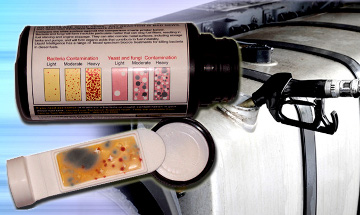
 Liquid Intelligence products are the BEST OF THE BEST. They have the highest degree of efficiency, activity and functionality, compared to any similar retail grade product.
Liquid Intelligence products are the BEST OF THE BEST. They have the highest degree of efficiency, activity and functionality, compared to any similar retail grade product. Unbeatable personal technical advice and support: “You Are Not Alone… When you ring us “We Are Here To Help You” get that problem sorted.
Unbeatable personal technical advice and support: “You Are Not Alone… When you ring us “We Are Here To Help You” get that problem sorted. Technical support staff with more than 40 years experience in the industry.
Technical support staff with more than 40 years experience in the industry. An unparalleled success rate… greater than 95% when combined with our comprehensive telephone technical advice and support.
An unparalleled success rate… greater than 95% when combined with our comprehensive telephone technical advice and support.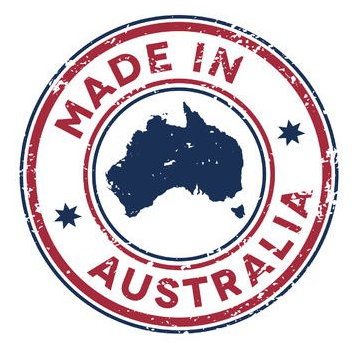 Made in Australia by an Australian business and exported around the world.
Made in Australia by an Australian business and exported around the world.
